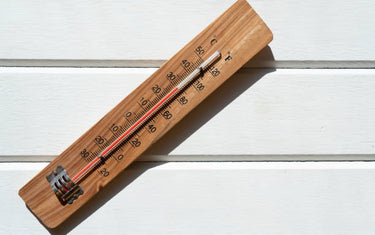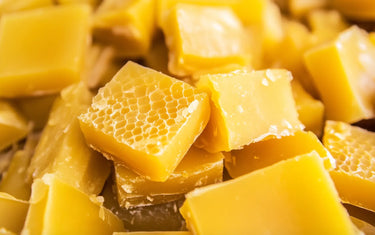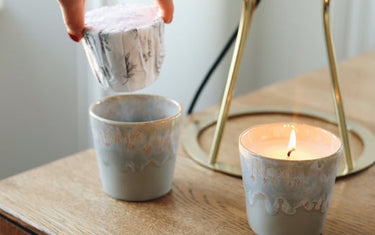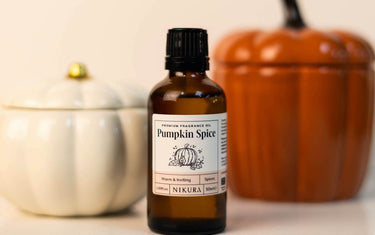4 min read / 24 February 2025 / yasmin sharp
What Are Flash Points?
Understanding flashpoints in essential and fragrance oils: what they are, why they matter, and why they're not a concern for candle makers.

Discussions about flashpoints can be a little confusing, especially as they are often talked about more in theory than in practice because they only tend to occur in very specific circumstances.
If you have taken a close look at a Safety Data Sheet (SDS) for an essential or fragrance oil, you may have noticed a reference to flashpoints. This is because every oil can experience one if it reaches a certain temperature, although this is incredibly rare.
Here we explain how flashpoints work, why they are important and if they impact the quality of your candle’s scent.
What is a flashpoint?A flashpoint occurs when a flammable liquid reaches its lowest temperature that allows its vapours to ignite when close by to an ignition source. This can occur with many different types of fluids, including essential oils and fragrance oils, and it typically leads to a brief flash of light rather than a continuous flammable fire, which gives name to the phrase itself. |
Why are flashpoints important?
From a safety perspective, flashpoints are crucial because they give an indication of how easily a flammable substance (or its vapours) could burn if it is exposed to a source of ignition.
This is why there are strict regulations in place regarding the transportation of perfumes, including eau de parfums and eau de toilettes. All perfumes and fragrances are categorised as High Flashpoint Class III Fuels, and are defined as having a flashpoint above 55°C and up to and including 100°C.
Being aware of the flashpoint for any given essential oil or fragrance oil will also ensure it is handled, stored and disposed of in the correct way.

Is perfume flammable?
Nearly all perfumes and fragrances are considered to be flammable, especially if they contain alcohol. However, the extent of a perfume’s flammability depends on its flashpoint and the amount of alcohol used to make it.
This is why some perfumes can ignite more easily than others, although most manufacturers will advise customers to keep their products away from direct heat sources.
Solid perfumes are usually less likely to experience a flashpoint, as they are made with beeswax, making them a safer alternative. Whilst beeswax is still a flammable substance it doesn’t contain solvents (such as alcohol) and it has a higher melting point and takes longer to burn.
Does the flashpoint temperature affect the quality of the fragrance’s scent?
All fluids will start to evaporate when they reach their boiling point, and the three fundamental notes that make up a perfume or fragrance (top, middle and bottom) each have their own boiling point. So, until these boiling points are reached, a fragrance will retain its scent.
Even if an essential oil or fragrance oil reaches its flashpoint, this won’t necessarily mean that the evaporation process has begun, as it will usually only be the surface area that has ignited.
Flash points only usually last for a few seconds at most, which means the temperature will not rise high enough to reach boiling point.

What is flashpoint testing?
Flashpoint testing involves checking whether a mixture of vapour and air is flammable. This is not a procedure you will have to carry out at home, as it should be completed by the essential or fragrance oil manufacturer.
This information should also be included on the SDS supplied with the product. It will give you an indication of the temperature at which the fragrance will ignite when positioned nearby to an open flame.
However, this is not something you will need to be concerned with when the oil is mixed with wax as part of any candle-making process, as a flashpoint can only occur in certain set conditions.
Is it dangerous to burn essential or fragrance oils in a candle?
Most essential oils and fragrance oils have a flashpoint between 37-93°C. As we mentioned above, these oils are considered flammable but provided the proper usage instructions are followed the risk of fire should be minimal.
In order for a flashpoint to occur, the candle will need to contain a large volume of essential or fragrance oil. As most candles contain an oil-to-wax ratio of up to 10%, this is nowhere near enough to create a flashpoint.
Just as importantly, a flashpoint can only occur if the oil is in an enclosed vessel when the source of ignition comes into contact with the vapour released by the heated oil.
So, as long as you follow the normal procedure for making a candle, it should not pose any threat to your safety.

Final thoughts
The main takeaway here should be that flashpoints are not something to be worried about when it comes to making candles. It is mostly a concern (and a legal requirement) for essential and fragrance oil manufacturers to ensure their products can be transported safely. At no point will you be required to expose a large amount of oil to a naked flame or any other form of ignition and you should not be in any danger. So, feel free to continue using your favourite oils and enjoy the creative and therapeutic benefits of being a budding candelier!









